A journey
through the history
and splendor
of Tuscan
goldsmithing

A THOUSAND-YEAR HISTORY

Etruscan Civilization
The Etruscans were the most outstanding goldsmiths of antiquity, devising the finest techniques.
Reinassance
The art of goldsmithing becomes a real craft. “Goldsmith’s workshops” are set up and new manufacturing processes are developed.

Today
Between tradition and contemporaneity, ancient workmanship and new materials, the Tuscan goldsmithing art is renowned and appreciated all over the world.
Granulation
The Etruscans used the most sophisticated techniques for working with precious metals, and their mastery has been passed down through the following centuries. In particular, they developed the fine art of granulation, a technique by which metal was reduced into tiny grains, then welded onto a thin sheet to shape jewelry, following predetermined patterns or designs. Like everything about the Etruscans, this technique is still partly shrouded in mystery, but some of its fabulous results can be seen in the museums in Tuscany.
FLORENTINE-STYLE FRETWORK AND ENGRAVING
In the Renaissance, the art of jewelry became a true craft that led to the birth of the legendary ” goldsmith’s workshops.” This period saw the development of exclusive and refined gold processing methods, such as Florentine-style fretwork and engraving.
TRADITION AND CONTEMPORANEITY
Creativity, esthetic sense and expertise are ideally fused together to make precious objects: Florentine-style fretwork and engraving are still used today by the skilled Florentine master goldsmiths, at the same time, processing techniques have been refined and manual skills can make use of innovative production systems, while creativity can explore and experiment with new materials.

THE ART
OF
GOLD IN MUSEUMS
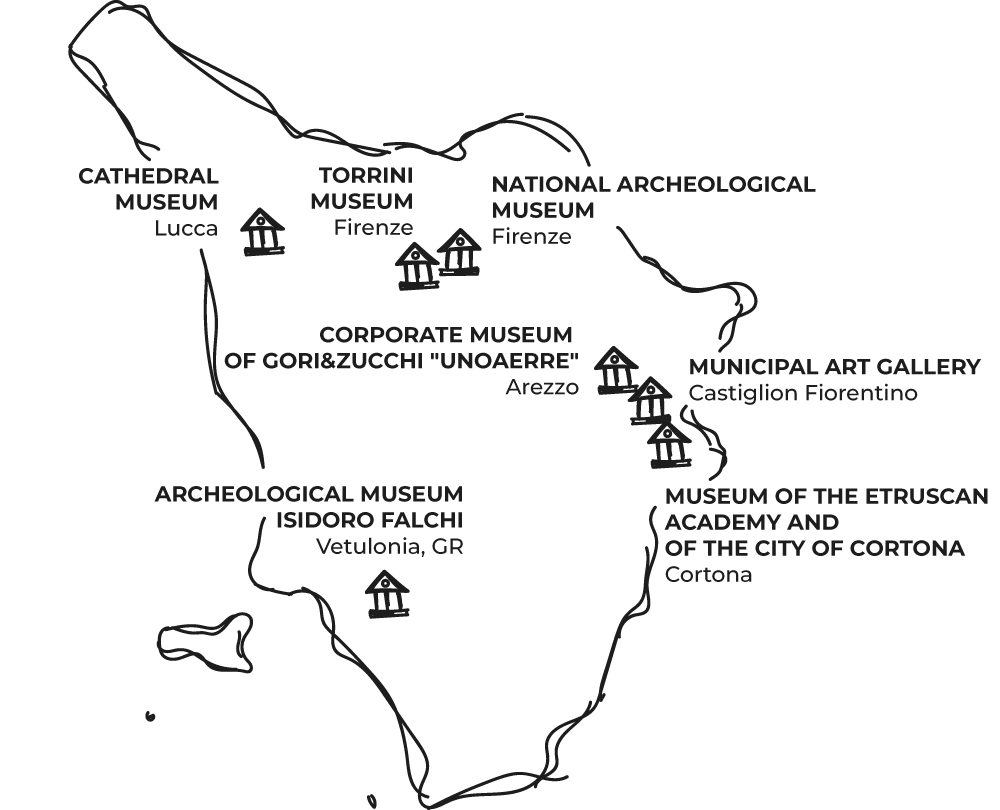
The art of gold
in companies
tons of gold processed each year, about half of the total imported into Italy
specialized handicraft companies
that create the gold production hub between Florence and Arezzo -the “city of gold” – including Castiglion Fiorentino, Cortona, and Pergine Valdarno.
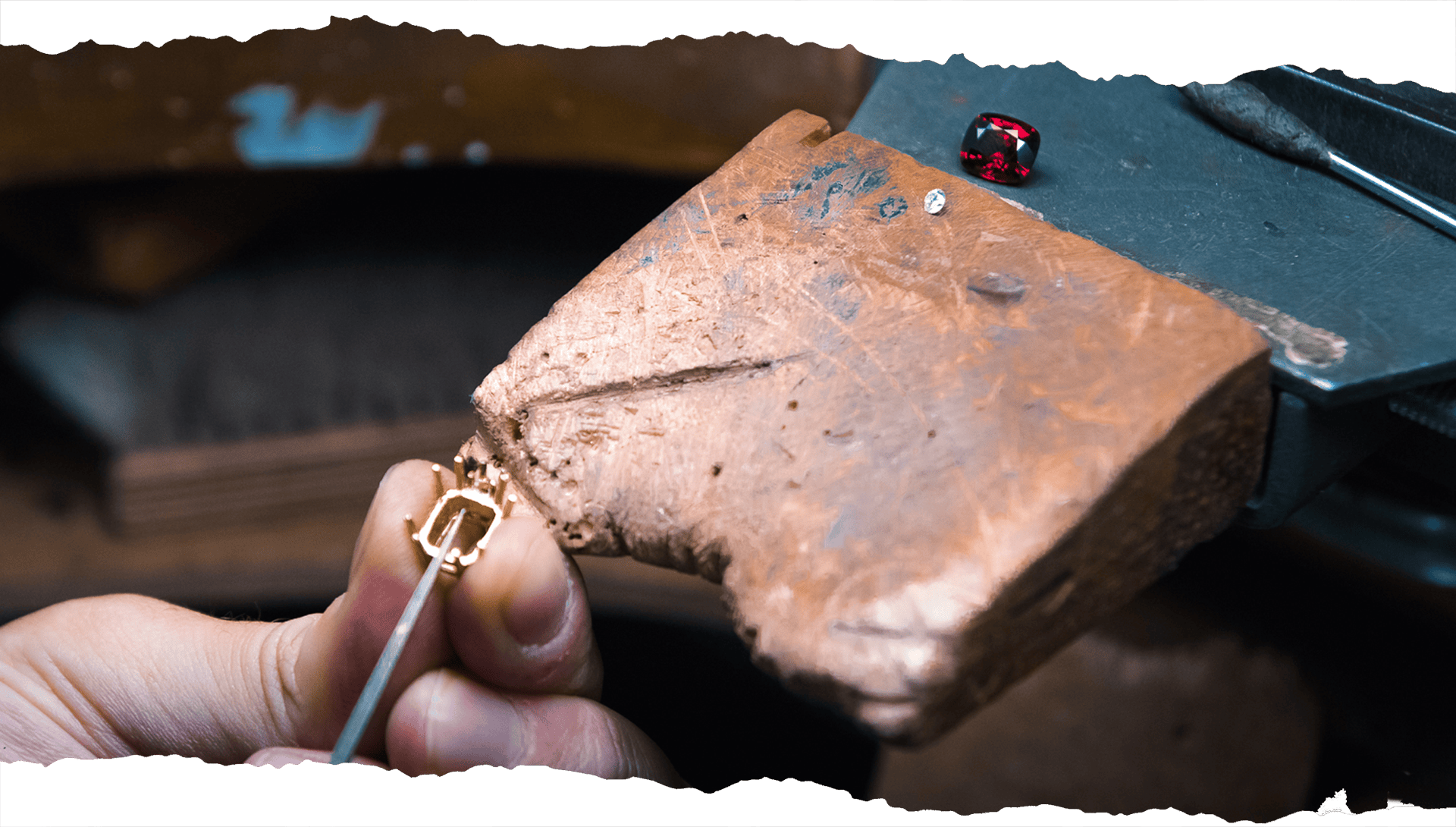
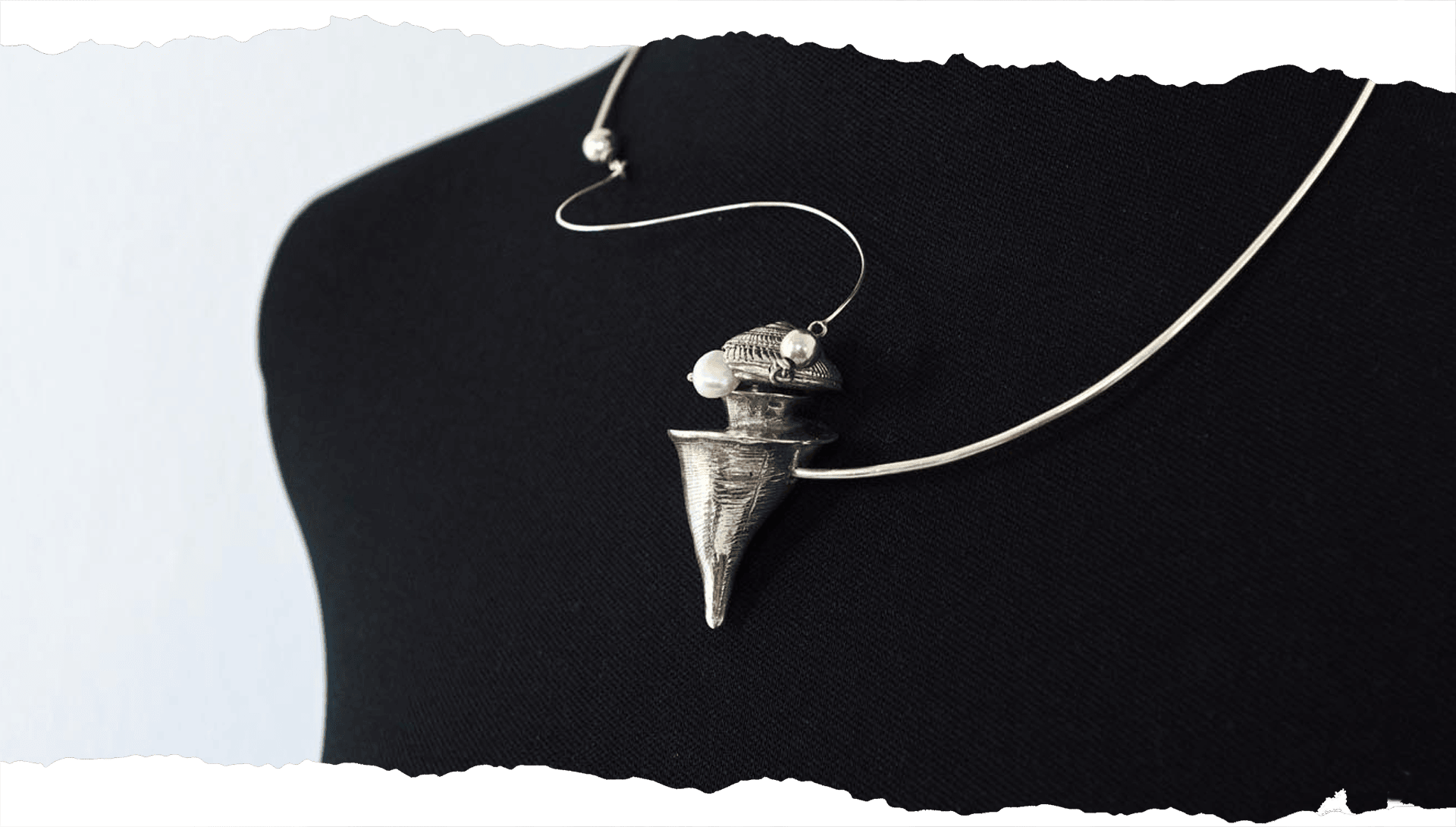
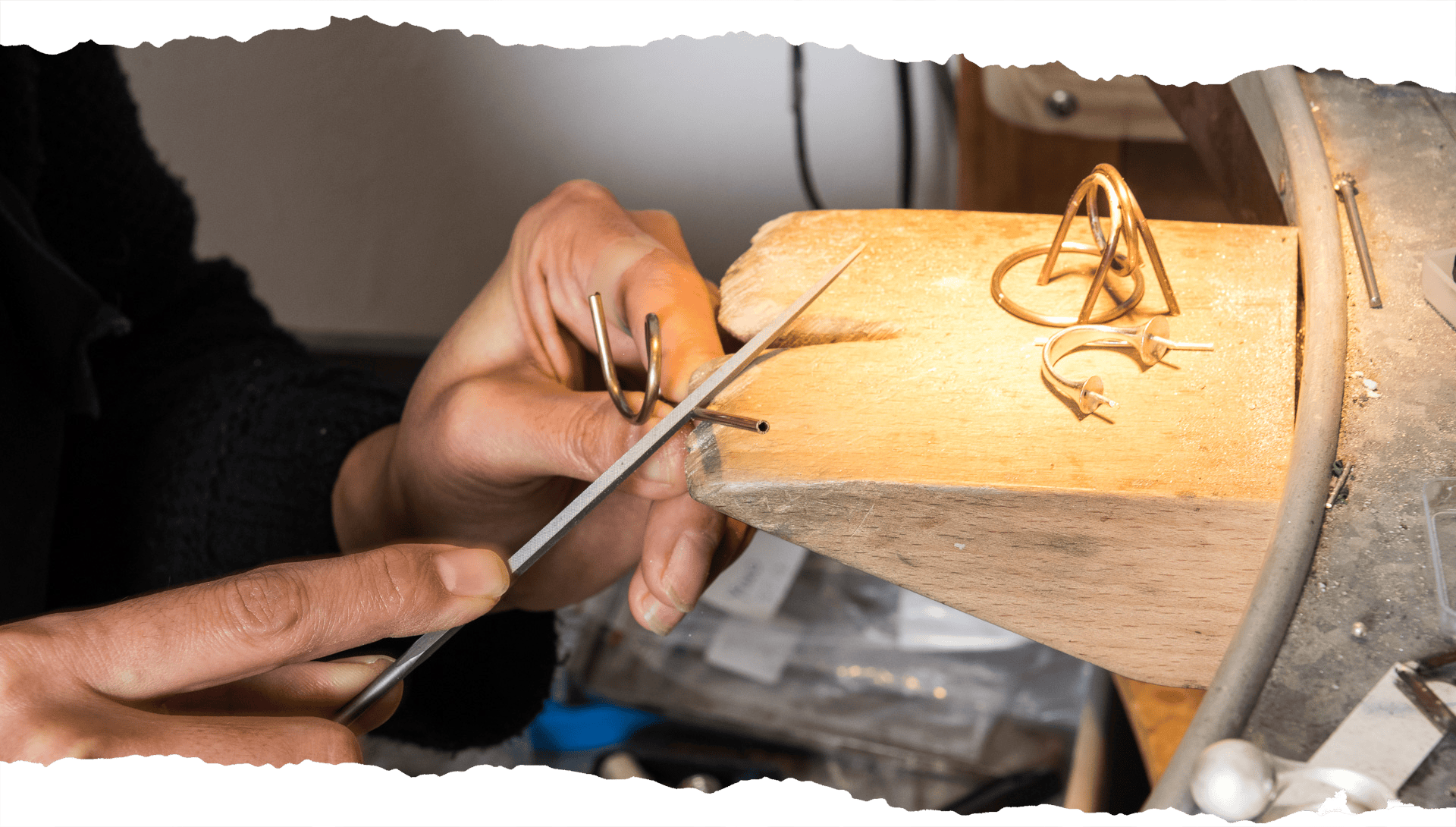
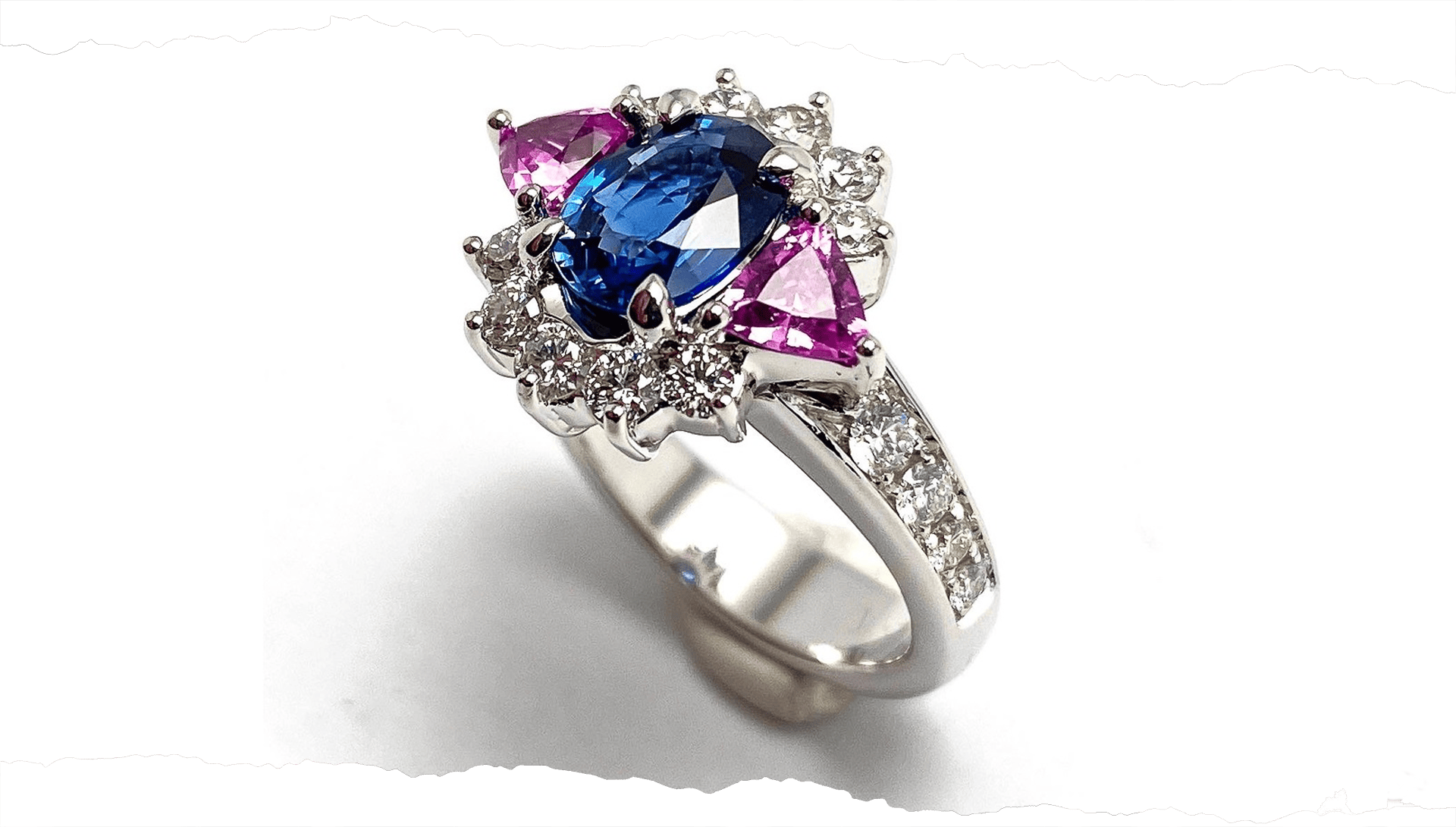
Ancient techniques, contemporary design
A handicraft tradition that has succeeded in growing and innovating, tenaciously preserving ancient production techniques and adapting them to contemporary designs and materials.
Lost-wax casting
A technique used to make precious sculptures and jewels since the Bronze Age, with a heyday in the Renaissance.
A wax model of the jewel is used to create a clay mold, from which the wax is then poured out after being melted. In its place, the precious metal is poured in, thus taking the shape of the starting wax model.


Engraving
Used to embellish jewels since 1700 B.C., and particularly popular in the Renaissance to create true works of art. The gold surface of an object is engraved and decorated by means of special tools, such as the burin, an ancient tool that makes it possible to remove a curl of metal.
Hand engraving with a burin, combined with fretwork, still creates today beautiful jewelry in typical Florentine style.
Setting
The technique of attaching gemstones of various kinds and shapes to a piece of jewelry. The stone is placed in the cavity (bezel), and the edge of the bezel is then rebated to make the metal adhere to the stone.



Embossing
A malleable metal sheet (such as gold) is worked to produce a relief figure. The decorative shape is achieved by working on the “back” of the sheet, pressing and hollowing the metal surfaces; details are then added by working on the “front”; the object is finally hardened to prevent further deformation.


